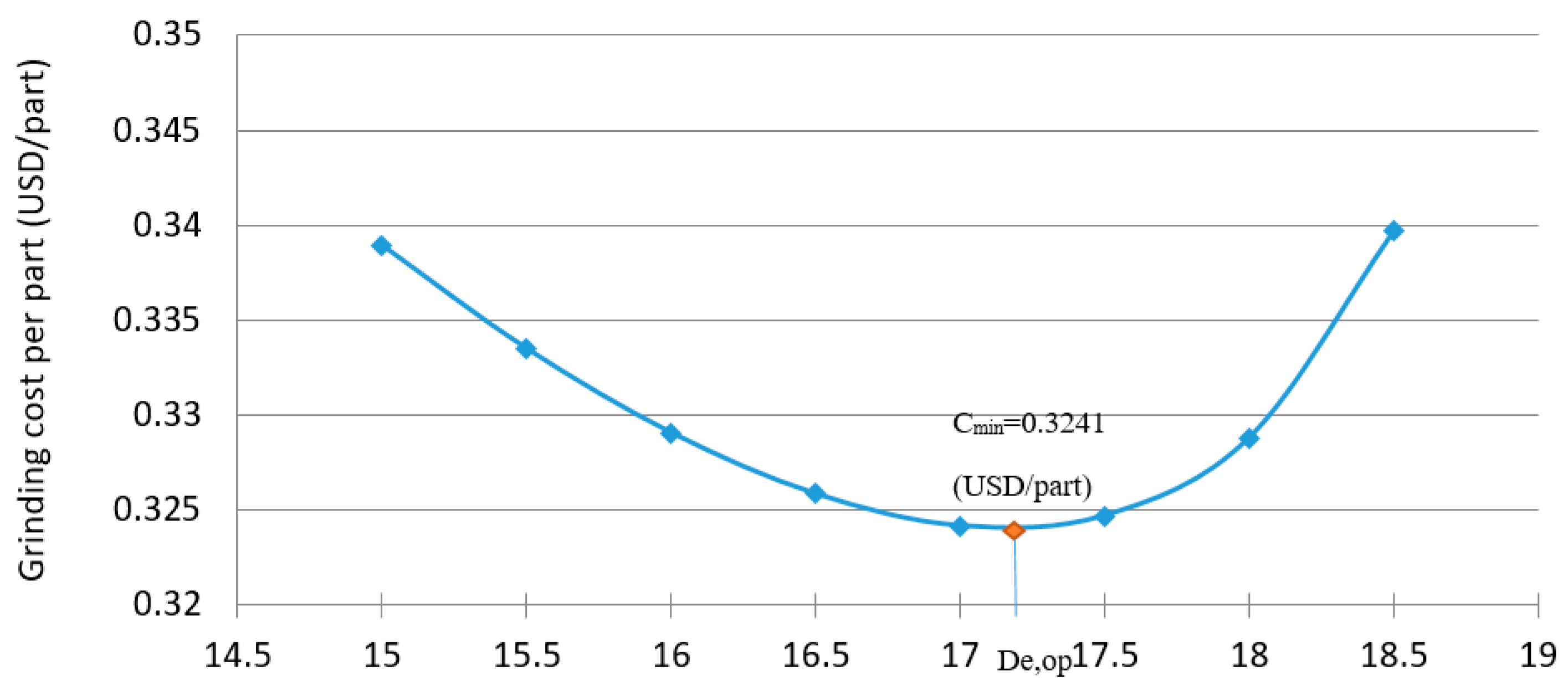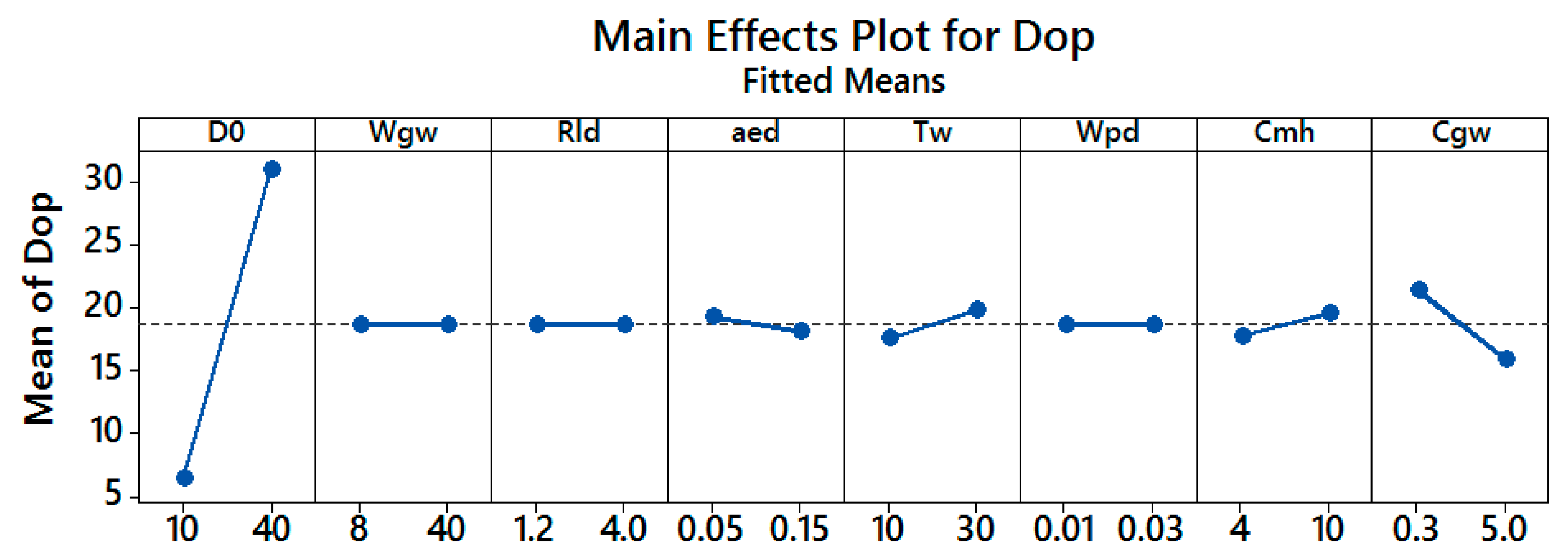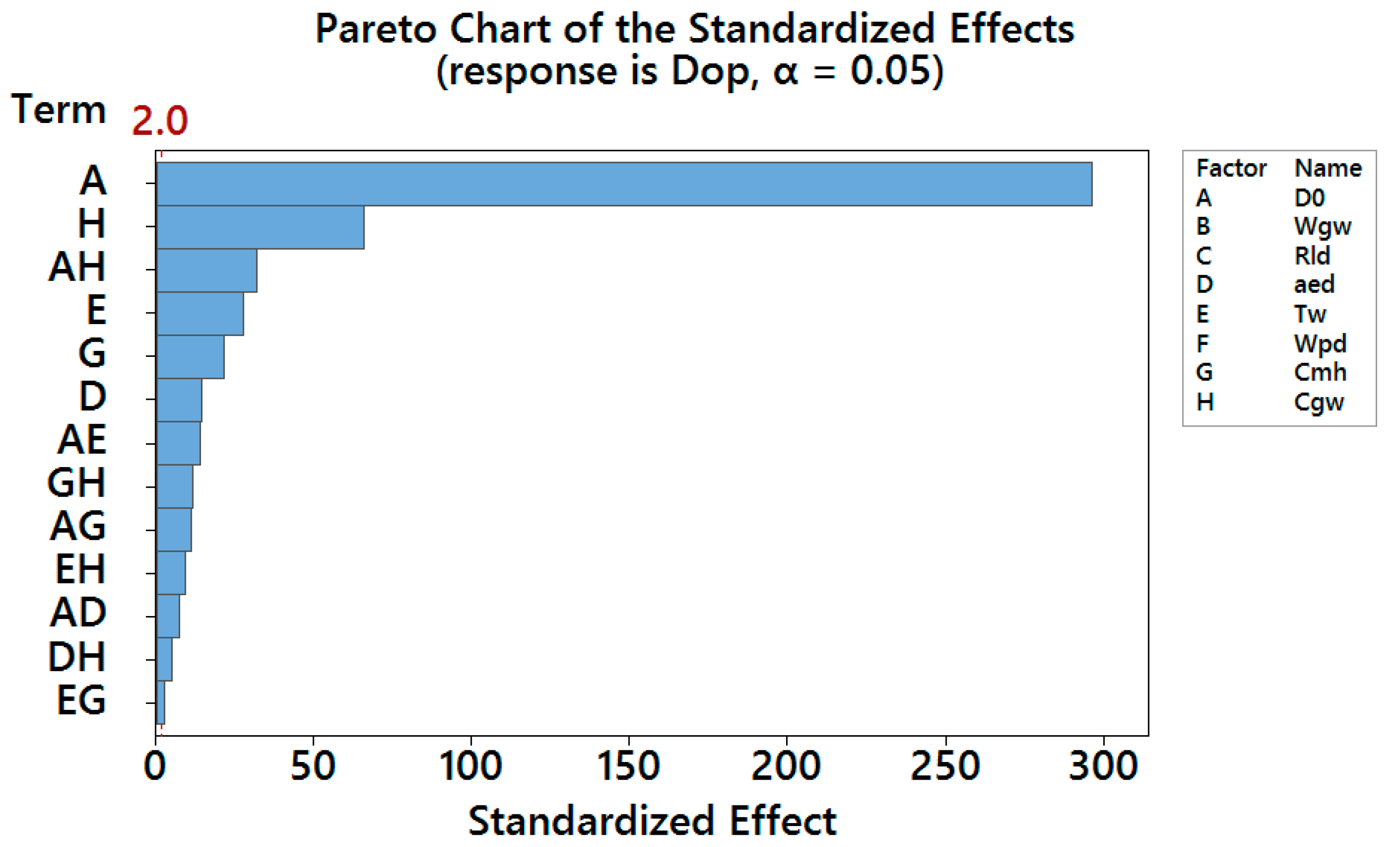Optimization of Replaced Grinding Wheel Diameter for Minimum Grinding Cost in Internal Grinding
Abstract
:1. Introduction
2. Cost Analysis
3. Experimental Work
4. Results and Discussion
5. Conclusions
Author Contributions
Funding
Conflicts of Interest
References
- Malkin, S.; Guo, C. Grinding Technology: Theory and Applications of Machining with Abrasives; Industrial Press: New York, NY, USA, 2008. [Google Scholar]
- Li, G.F.; Wang, L.S.; Yang, L.B. Multi-parameter optimization and control of the cylindrical grinding process. J. Mater. Process. Technol. 2002, 129, 232–236. [Google Scholar] [CrossRef]
- Gupta, R.; Shishodia, K.S.; Sekhon, G.S. Optimization of grinding process parameters using enumeration method. J. Mater. Process. Technol. 2001, 112, 63–67. [Google Scholar] [CrossRef]
- Chatterjee, S.; Rudrapati, R.; Kumar pal, P.; Nandi, G. Experiments, analysis and parametric optimization of cylindrical traverse cut grinding of aluminium bronze. Mater. Today: Proc. 2018, 5, 5272–5280. [Google Scholar] [CrossRef]
- Pi, V.N.; The, P.Q.; Khiem, V.H.; Huong, N.N. Cost optimization of external cylindrical grinding. Appl. Mech. Mater. 2013, 312, 982–989. [Google Scholar] [CrossRef]
- Rana, P.; Lalwani, D.I. Parameters optimization of surface grinding process using Modified ε constrained Differential Evolution. Mater. Today: Proc. 2017, 4, 10104–10108. [Google Scholar] [CrossRef]
- Warnecke, G.; Barth, C. Optimization of the Dynamic Behavior of Grinding Wheels for Grinding of Hard and Brittle Materials Using the Finite Element Method. CIRP Ann. Manuf. Technol. 1999, 48, 261–264. [Google Scholar] [CrossRef]
- Pi, V.N.; Tung, L.A.; Hung, L.X.; Ngoc, N.C. Experimental Determination of Optimum Replaced Diameter in Surface Grinding Process. J. Environ. Sci. Eng. 2017, 5, 85–89. [Google Scholar]
- Pandiyan, V.; Caesarendra, W. Tegoeh Tjahjowidodo, and Gunasekaran Praveen, Predictive Modelling and Analysis of Process Parameters on Material Removal Characteristics in Abrasive Belt Grinding Process. Appl. Sci. 2017, 7, 363. [Google Scholar] [CrossRef]
- Liu, Y.; Peng, H.; Yang, Y. Reliability Modeling and Evaluation Method of CNC Grinding Machine Tool. Appl. Sci. 2019, 9, 14. [Google Scholar] [CrossRef]
- Vu, N.P.; Nguyen, O.-X.; Tran, T.-H.; Le, H.-K.; Nguyen, A.-T.; Luu, A.-T.; Nguyen, V.-T.; Le, X.-H. Optimization of Grinding Parameters for Minimum Grinding Time When Grinding Tablet Punches by CBN Wheel on CNC Milling. Appl. Sci. 2019, 9, 957. [Google Scholar] [CrossRef]
- Inasaki, I. Monitoring and Optimization of Internal Grinding Process. CIRP Ann. Manuf. Technol. 1991, 40, 359–362. [Google Scholar] [CrossRef]
- Daneshi, A.; Jandaghi, N.; Tawakoli, T. Effect of Dressing on Internal Cylindrical Grinding. Procedia CIRP 2014, 14, 37–41. [Google Scholar] [CrossRef] [Green Version]
- Xiao, G.; Malkin, S. On-Line Optimization for Internal Plunge Grinding. CIRP Ann. Manuf. Technol. 1996, 45, 287–292. [Google Scholar] [CrossRef]
- Tönshoff, H.K.; Walter, A. Self-tuning fuzzy-controller for process control in internal grinding. Fuzzy Sets Syst. 1994, 63, 359–373. [Google Scholar] [CrossRef]
- Pi, V.N.; Hung, L.X.; Tung, L.N.; Long, B.T. Cost Optimization of Internal Grinding. J. Mater. Sci. Eng. B 2016, 6, 291–296. [Google Scholar]
- Brian Rowe, W. Principle of Modern Grinding Technology; Elsevier: Amsterdam, The Netherlands, 2009. [Google Scholar]
- Long, B.T.; Pi, V.N.; Hung, L.X.; Tung, L.A. Building cutting regime formulas for internal grinding (In Vietnamese). J. Sci. Technol. 2016, 9, 15–18. [Google Scholar]
- Kozuro, L.M.; Panov, A.A.; Remizovski, E.I.; Tristosepdov, P.S. Handbook of Grinding (in Russian); Publish Housing of High-Education: Minsk, Russia, 1981. [Google Scholar]
- Hung, L.X.; Hong, T.T.; Ky, L.H.; Tuan, N.Q.; Tung, L.A.; Long, B.T.; Pi, V.N. A study on calculation of optimum exchanged grinding wheel diameter when internal grinding. In Proceedings of the 9th International Conference on Materials Processing and Characterization, Hyderabad, India, 8–10 March 2019. [Google Scholar]







| Coefficient depends on | Code | Value | Reference |
|---|---|---|---|
| Work-piece material and tolerance grade | c1 | [18] | |
| Grinding wheel diameter | c2 | [18] | |
| Measurement type | c3 | 1 (using micrometer) | [19] |
| Ratio of length to diameter of work-piece | c4 | [18] |
| Name | Code | Equation |
|---|---|---|
| Grinding time | tc | |
| Dressing time | td,p | |
| Wheel replacing time per work-piece | twr,p |
| Factor | Code | Unit | Low | High |
|---|---|---|---|---|
| Initial grinding wheel diameter | D0 | mm | 10 | 40 |
| Grinding wheel width | Wgw | mm | 8 | 40 |
| L/d ratio | Rld | - | 1.2 | 4 |
| Total depth of dressing cut | aed | mm | 0.05 | 0.15 |
| Life of wheel | Tw | min | 10 | 30 |
| Radial grinding wheel wear per dress | Wpd | mm | 0.01 | 0.03 |
| Cost of the grinding machine | Cm,h | USD/h | 4 | 10 |
| Wheel cost per piece | Cgw | USD/p. | 0.3 | 5 |
| StdOrder | RunOrder | CenterPt | Blocks | D0 | Wgw | Rld | aed | Tw | Wpd | Cm,h | Cgw | De,op |
|---|---|---|---|---|---|---|---|---|---|---|---|---|
| 97 | 1 | 1 | 1 | 10 | 8 | 1.2 | 0.05 | 10 | 0.03 | 10 | 0.3 | 7.84 |
| 82 | 2 | 1 | 1 | 40 | 8 | 1.2 | 0.05 | 30 | 0.01 | 10 | 5 | 32.2 |
| 51 | 3 | 1 | 1 | 10 | 40 | 1.2 | 0.05 | 30 | 0.03 | 4 | 5 | 5.33 |
| 89 | 4 | 1 | 1 | 10 | 8 | 1.2 | 0.15 | 30 | 0.01 | 10 | 5 | 5.86 |
| 108 | 5 | 1 | 1 | 40 | 40 | 1.2 | 0.15 | 10 | 0.03 | 10 | 5 | 25.69 |
| 104 | 6 | 1 | 1 | 40 | 40 | 4 | 0.05 | 10 | 0.03 | 10 | 5 | 28.24 |
| … | ||||||||||||
| 54 | 127 | 1 | 1 | 40 | 8 | 4 | 0.05 | 30 | 0.03 | 4 | 0.3 | 36.23 |
| 9 | 128 | 1 | 1 | 10 | 8 | 1.2 | 0.15 | 10 | 0.01 | 4 | 5 | 3.23 |
© 2019 by the authors. Licensee MDPI, Basel, Switzerland. This article is an open access article distributed under the terms and conditions of the Creative Commons Attribution (CC BY) license (http://creativecommons.org/licenses/by/4.0/).
Share and Cite
Tran, T.-H.; Le, X.-H.; Nguyen, Q.-T.; Le, H.-K.; Hoang, T.-D.; Luu, A.-T.; Banh, T.-L.; Vu, N.-P. Optimization of Replaced Grinding Wheel Diameter for Minimum Grinding Cost in Internal Grinding. Appl. Sci. 2019, 9, 1363. https://doi.org/10.3390/app9071363
Tran T-H, Le X-H, Nguyen Q-T, Le H-K, Hoang T-D, Luu A-T, Banh T-L, Vu N-P. Optimization of Replaced Grinding Wheel Diameter for Minimum Grinding Cost in Internal Grinding. Applied Sciences. 2019; 9(7):1363. https://doi.org/10.3390/app9071363
Chicago/Turabian StyleTran, Thi-Hong, Xuan-Hung Le, Quoc-Tuan Nguyen, Hong-Ky Le, Tien-Dung Hoang, Anh-Tung Luu, Tien-Long Banh, and Ngoc-Pi Vu. 2019. "Optimization of Replaced Grinding Wheel Diameter for Minimum Grinding Cost in Internal Grinding" Applied Sciences 9, no. 7: 1363. https://doi.org/10.3390/app9071363
APA StyleTran, T.-H., Le, X.-H., Nguyen, Q.-T., Le, H.-K., Hoang, T.-D., Luu, A.-T., Banh, T.-L., & Vu, N.-P. (2019). Optimization of Replaced Grinding Wheel Diameter for Minimum Grinding Cost in Internal Grinding. Applied Sciences, 9(7), 1363. https://doi.org/10.3390/app9071363







